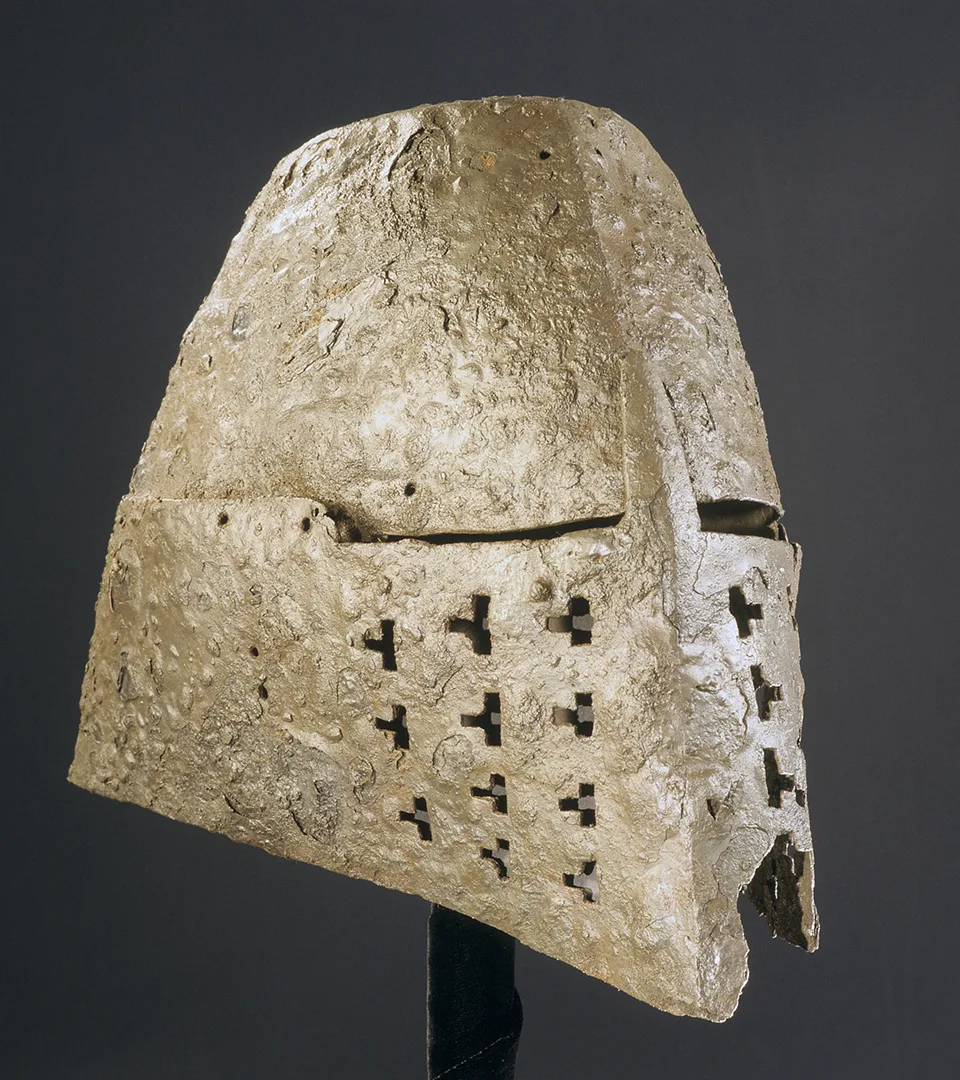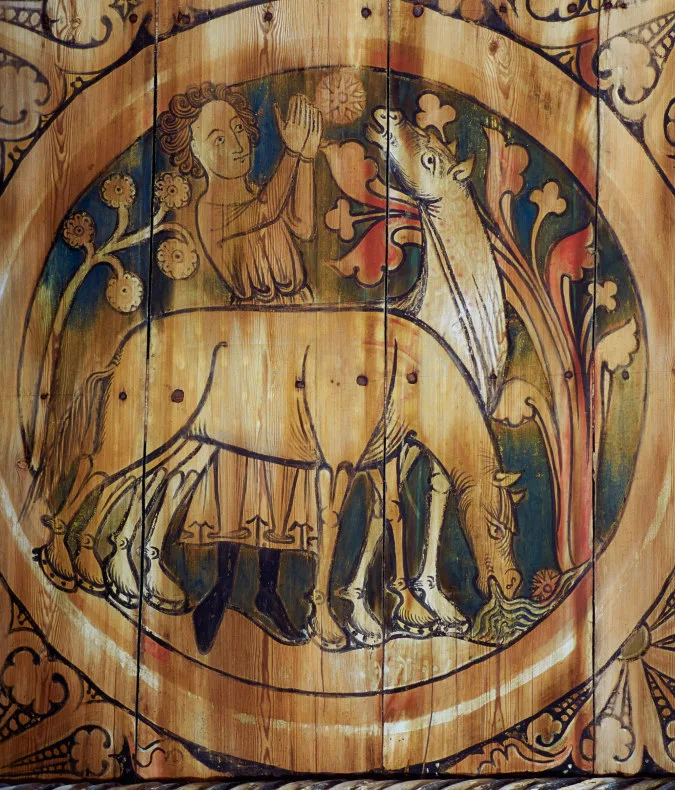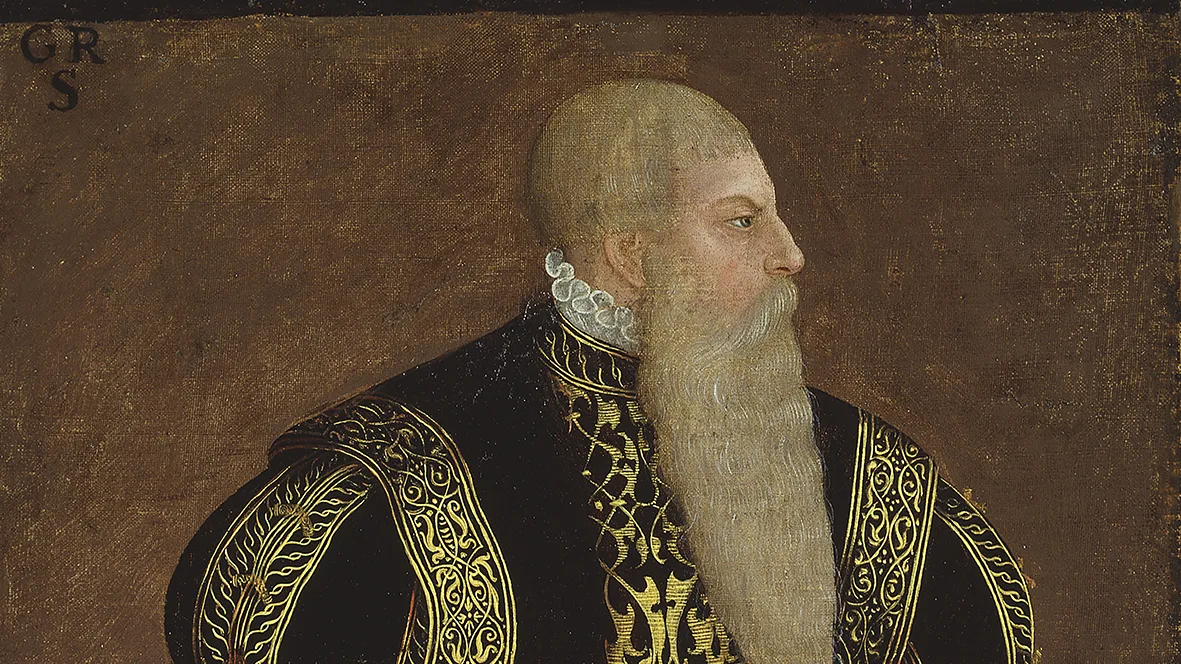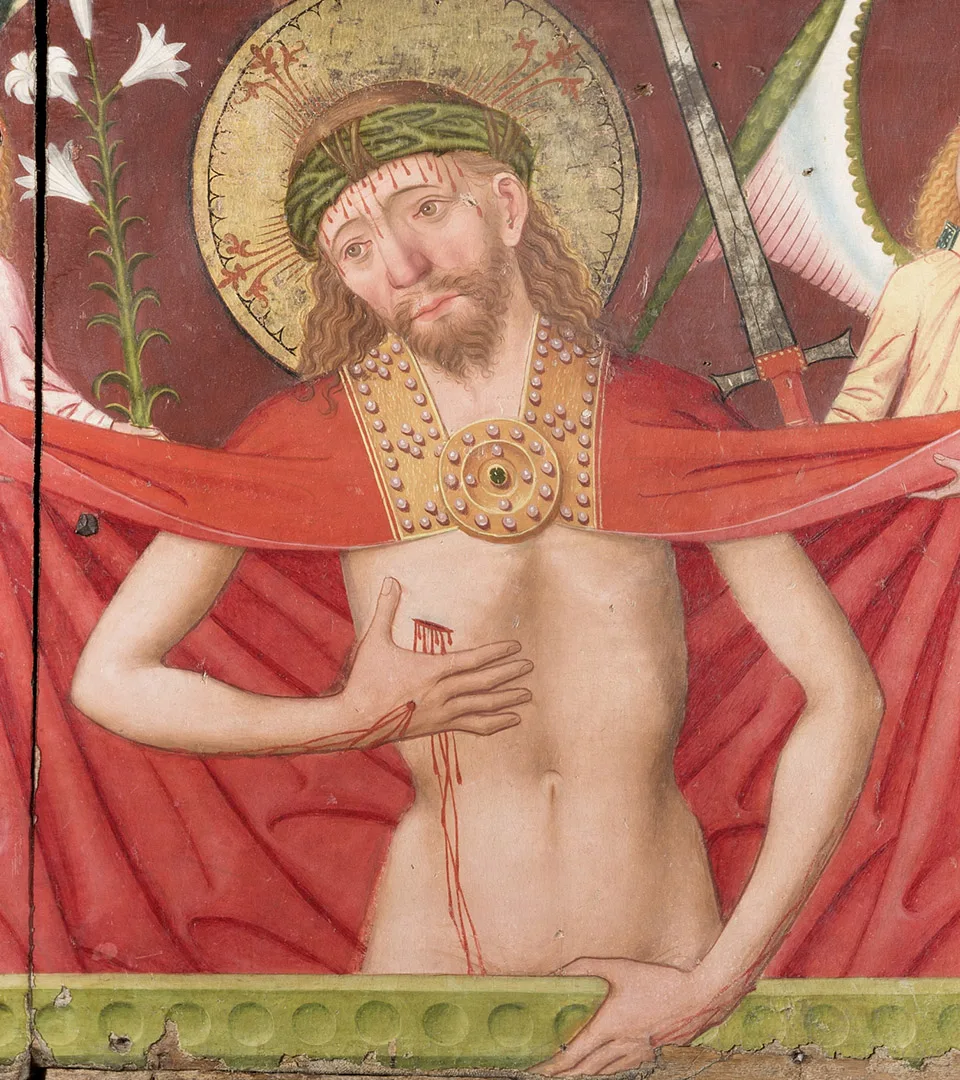The Linköping hoard – a famous silver treasure
Viking Age
AD 800 – AD 1100
Middle Ages
AD 1050 – AD 1520
Modern Age
AD 1520 – AD 2025
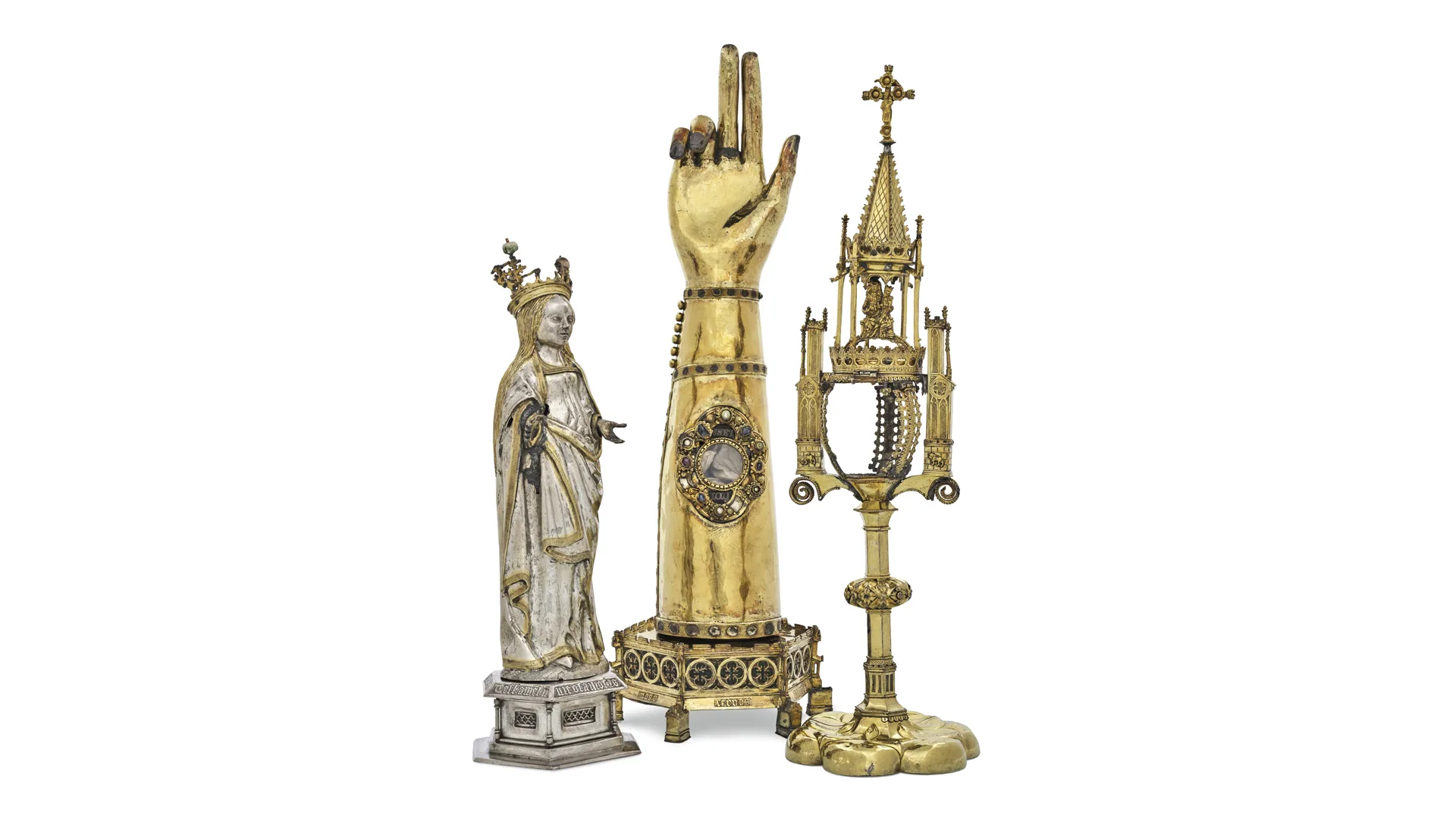
The hoard includes a paten from the 13th century and four reliquaries from the 15th century. Two of the reliquaries are shaped like arms and are thought to have contained relics of Saint Bridget and Saint Eskil. Relics are remains or objects connected with saints - in this case, upper arm bones.

Reliquary for Saint Eskil
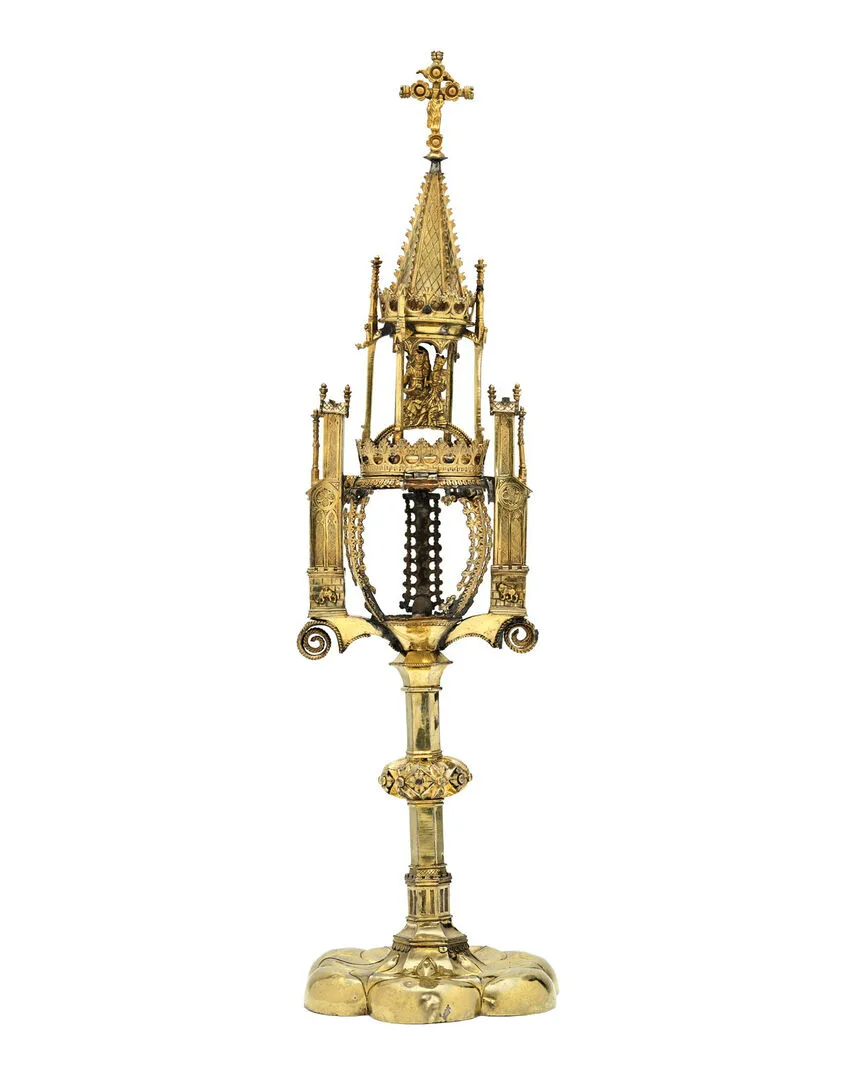
Reliquary
A third reliquary takes the form of a statuette of Saint Catherine of Alexandria. It is designed as a tower, in which relics were once kept in a now-lost glass container.
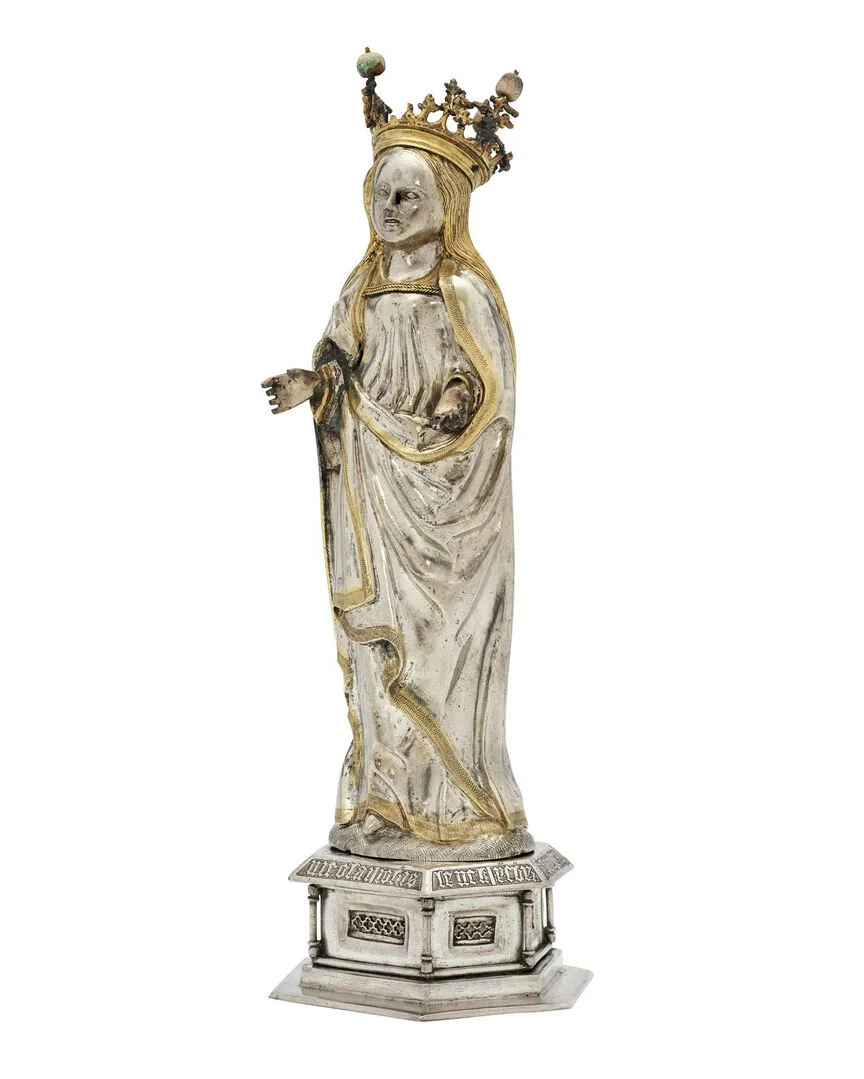
Reliquary
Chalice
Another object in the hoard is a chalice. A chalice is a drinking vessel, usually of silver, used for distributing wine during the Eucharist. This one consists of a bowl, or cuppa, set on a tall stem with a knob, known as a node.
The base is decorated with images of the Crucified Christ, the Virgin Mary, John, Peter, and Paul, as well as several angels. It was made in Germany.

Chalice
Paten
The paten is a small plate used for the communion bread. This example, made of gilded silver in the 13th century, has a slightly recessed centre. On the rim is depicted the blessing hand of God.

